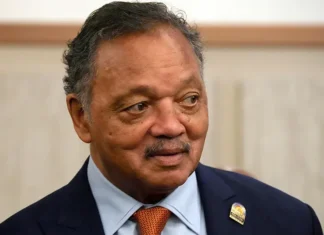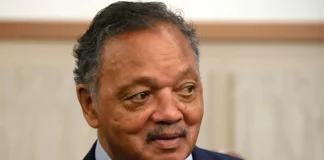
“Malcolm X at 100” is Word In Black’s series honoring the life, ideas, and legacy of El-Hajj Malik El-Shabazz on what would have been his 100th birthday.
When the first Black members of Generation X were born in the mid-1960s, Malcolm X was a towering figure in America, declaring that Black people deserved more than the white man was willing to give. When he was assassinated, they were still in diapers.
And, as Black Gen X’ers came of age amid the civil rights movement’s broken promises — persistent racial segregation, economic inequality, the mass incarceration of Black men fueled by the failed war on drugs — they rediscovered, and embraced, the philosophy and teaching of Malcolm X, a.k.a El-Hajj Malik El-Shabazz.
Scholars, historians, and pop-culture experts say El-Shabazz is arguably one of the most influential figures in the lives of Black Gen-Xers, now known as the hip-hop generation. Forever young himself, Malcolm X’s uncompromising vision, timeless charisma, and rhetorical “flow,” as the rappers say, inspired a generation of Black artists, writers, musicians, and activists who entered adulthood in the 1980s and 1990s.
New Message for a New Generation
Public Enemy, KRS-One, Dead Prez, and other hip-hop acts were early adopters, unearthing LPs of Malcolm X’s speeches in record-store bins and second-hand shops. Spike Lee released his magnum opus, “Malcolm X,” in 1992, when the bulk of Black Gen X’ers were in their teens or early twenties. Back then, bootleg T-shirts with the famous image of El-Shabazz holding a shotgun and peering out of a window (or simply emblazoned with a large letter “X”) were as ubiquitous and fashionable as a fresh pair of Air Jordans or a box-top fade.
Drawn in by Lee’s biopic, snippets of his speeches embedded in rap songs or readings of “The Autobiography of Malcolm X,” some young adults flocked to El-Shabazz’s message. Some nodded along with his piercing critiques of capitalism, white supremacy, and the false promise of integration; others seized on the urgency of Malcolm X’s most famous phrase — “By any means necessary” — as a rebellion against the staid, “We shall overcome” politics of their parents.
“If you look at the hip hop generation, they really have embraced Malcolm,” says Anthony Davis, an award-winning playwright and composer who has created several works based on El-Shabazz’s life.
“Malcolm is a symbol of defiance, self-reliance, and uncompromising strength against oppression. He was about realizing the real oppressive forces that were in America and knowing that sometimes they can be appeased — but only at moments.”
Anthony Davis, award-winning playwright
Malcolm X’s enduring legacy, Davis says, is a clear, eloquent message of self-empowerment and Black pride — a perfect message for disillusioned, frustrated Black youth.
“Malcolm is a symbol of defiance, self-reliance, and uncompromising strength against oppression,” Davis, who won a Pulitzer Prize for “The Central Park Five,” an opera about the New York City teenagers wrongfully accused of rape, says. “He was about realizing the real oppressive forces that were in America and knowing that sometimes they can be appeased — but only at moments.”
“Rapper Without a Beat”
Journalist, educator, and pop culture critic Toure says El-Shabazz all but invented hip-hop as an art form, and is “perhaps the most important non-musical influencer of them all.” El-Shabazz’s ideas, speaking cadence, and self-assuredness, he says, still resonate some 60 years after his murder.
“Malcolm’s telegenic eloquence and his joy of rocking the mic with intelligence and swagger makes him sound like a rapper without a beat,” Toure said in a recent TikTok post. “His way of speaking as an art form, plus his pro-Black politics … all of that has a huge impact on hip-hop.”
Indeed, rappers sampled El-Shabazz’s fierce message of self-empowerment so often he wound up on the cover of the Source Magazine in 1990. His message of empowerment and self-reliance, experts say, hit home with young Black people disaffected with politics, race relations, and capitalism.
Russell Rickford, a Cornell University professor and historian, wrote in a 2014 essay that Black Gen X’ers were reacting to “bipartisan assaults on cities and the working-class,” through policies like the 1994 Crime Bill and trade globalization.
With important civil rights figures like Martin Luther King, Jr. and Paul Robeson sanitized or marginalized, he wrote, “we needed a voice of uncompromising militancy, a standard-bearer for our ‘no sellout’ philosophy,” and Malcolm X fit the bill.
Shabazz’s radicalism “steeled us and helped us confront the anemia of ‘multiculturalism’ and the devastation of mass imprisonment, police brutality, and virtually unrestrained corporate capitalism,” Rickford wrote. Meanwhile, the “illusion” of integration, he wrote, allows access for some, but Black people “continue to be discriminated against in often subtle and sometimes not so subtle ways.”
Message Still Resonates
Davis, the award-winning composer, says many of the issues Black Gen X’ers faced back in the day still persist, which is why El-Shabazz’s message still resonates. He cites contemporary artists like Kendrick Lamar and others following in Gen X’s footsteps, inspired by El-Shabazz to disrupt the system — particularly in the Trump 2.0 era.
“I don’t think Malcolm X would be surprised” that white voters sent President Donald Trump back to the White House, Davis says. “He was more fatalistic about these problems because he understood they weren’t surface-level. They were built into our Constitution, and it was always going to take monumental effort to excise them.”
That clear-eyed vision of the U.S., Davis says, is a big reason why younger generations embrace El-Shabazz rather than King, whose passive-resistance agenda seems less powerful or urgent than “by any means necessary.”
“I deeply admire what Dr. King and others achieved during the Civil Rights Movement — he saw the problems, but he was more optimistic about changing and transforming the system,” Davis says. “And that works in cycles. But here we are, 60 years later, still facing many of the same struggles.”
The difference between now and the 1960s “is that we have more economic strength and social capital than we did then, and we need to use that to sustain and evolve the movement,” he says. “The fight isn’t over — it’s just changed forms.”















